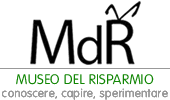The Museum of Saving has developed and promoted a survey among the target population of 18-74 year olds to verify the existence and effects of possible distortions in the measurement of the level of financial education of Italians.
In particular, it was intended to evaluate whether the questions formulated in a different way from the standard, more engaging from a personal point of view for the interviewees, give different results from those sadly notorious in which Italians are at the bottom of the ranking of financial literates in international comparisons.
At the OECD survey level (2020)¹, Italy is in fact in 25th position, ahead only of Malta. The indications on the financial literacy of Italians taken from the “Survey on Financial Literacy and Financial Skills of Italians” (Bank of Italy, 2020), confirm how financial literacy is different in the various segments of the population: graduates do better than non-graduates; men on average better than women; older generations better than the young.
Research insights
The questionnaire of this research was mainly aimed at testing questions formulated in an alternative way compared to the standard version of four questions that are usually used to measure the level of financial education.
2500 interviews were conducted using the CAWI (Computer Assisted Web Interviewing) technique on a representative sample by gender, individual age and geographic area of residence. The questionnaire was divided into 21 closed questions. The field closed in October 2021.
From the comparison between the responses to the “standard” and “alternative” versions, the alternative version mitigates the gender gap and the educational level for women.
On the total population, the two pairs of versions with three and four questions highlight a significant but not conclusive framing effect. In fact, for 2 out of 4 questions the percentage of right answers increases in the alternative version. The inflation question does not show significant changes due to the wording while the diversification question sees a reduction in correct answers in the alternative version, the result of great confusion on the riskiness of government bonds and real estate. In terms of financial literacy, understood as choosing the right answer to all the questions at the same time, no improvements whatsoever can be seen in the two wordings.
The wording or framing effect deserves greater attention but does not seem to explain the lack of financial skills/knowledge of the Italian population which probably rests on profound reasons connected to the culture that accompanies the use of money.
Download here the research results Measuring financial education.
For further statistical information on the results of the survey, you can consult the working paper “Does the question wording matter? A study of the framing effect on financial literacy in Italy” by Giovanna Paladino.
¹Source: “OECD INFE International Survey of Adult Financial Literacy”, 2020
tag: Misurare l’educazione finanziaria
